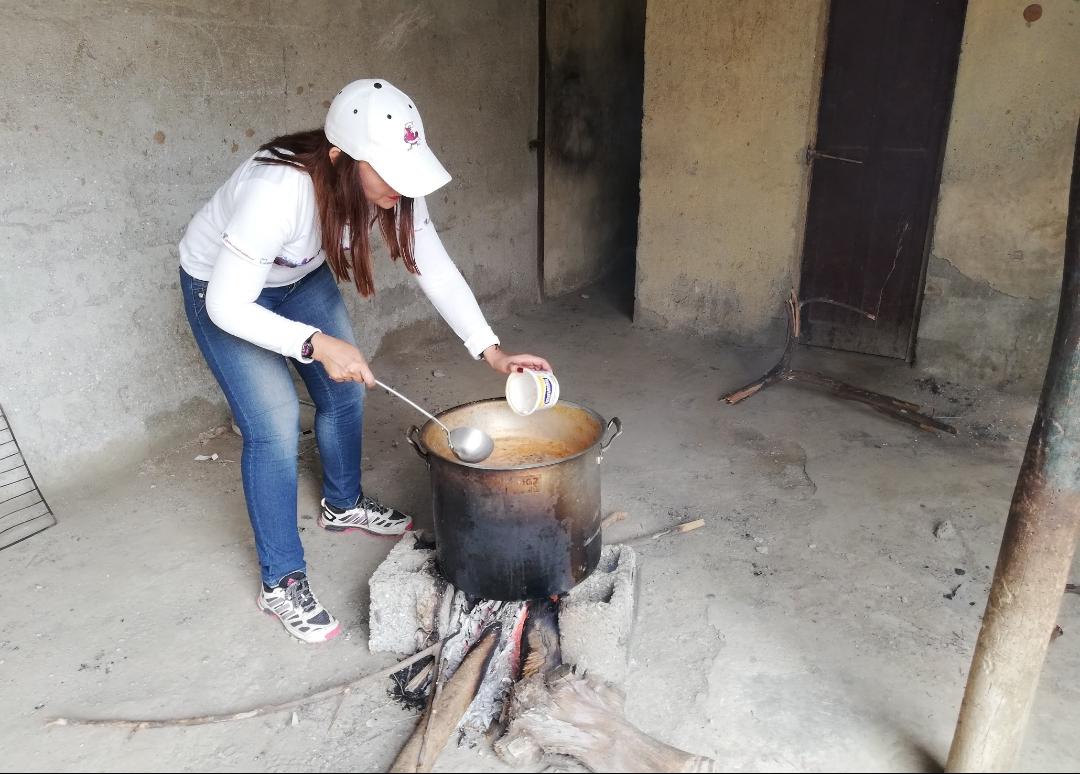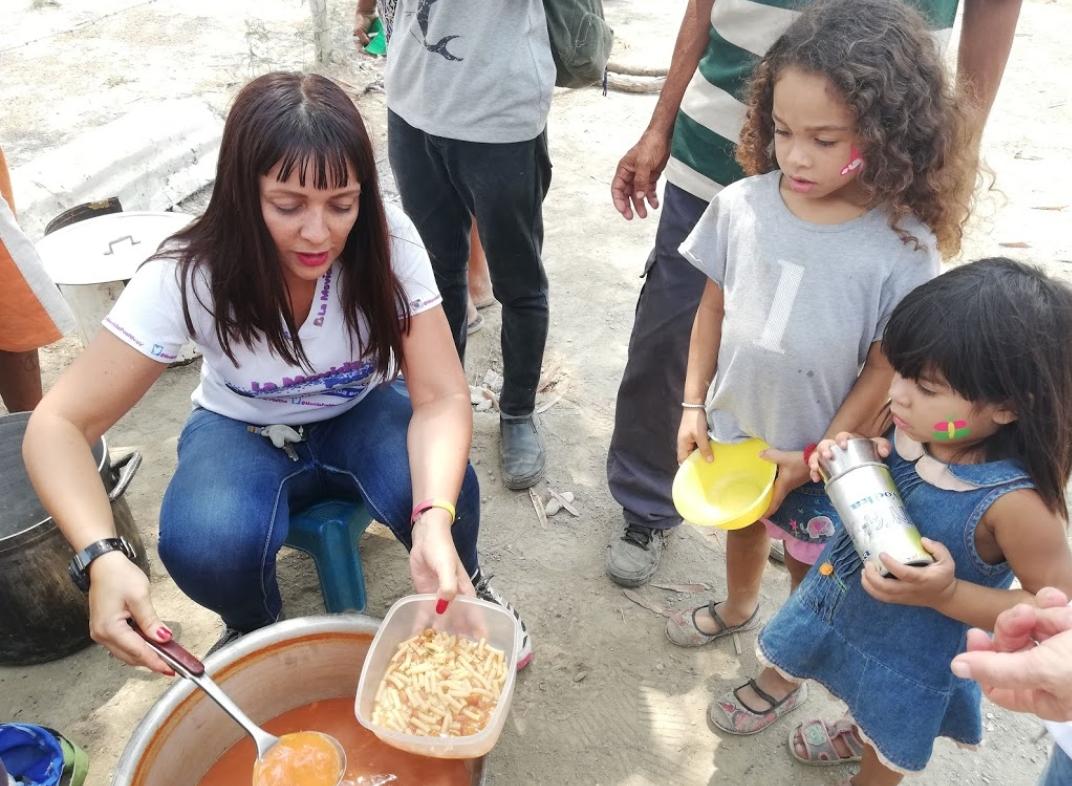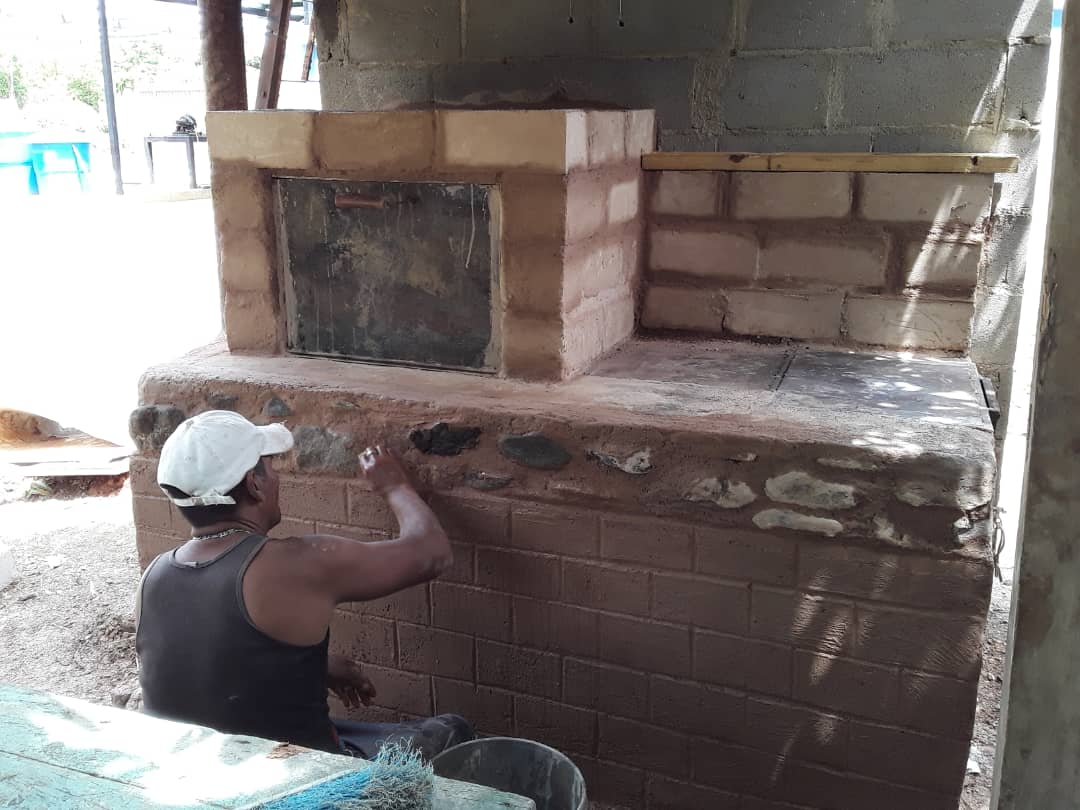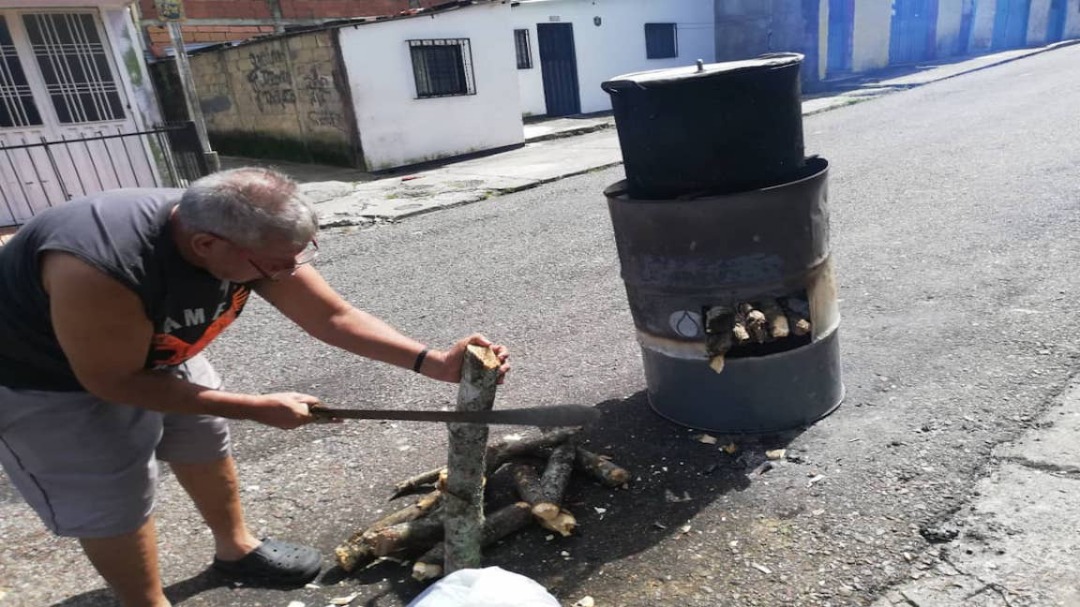Cooking With No Gas, No Power
In Barquisimeto, the sophisticated traditional cuisine has been replaced by survival with alternative ingredients and artisanal cookers.


Photos: Jennifer Peña and Rosender Evies
Aura Marina Silva, a 66-year-old living in Western Barquisimeto, cooks with whatever’s at hand. She makes arepas with cracked rice (previously used only for animals), sweet potato, taro or carrot (and she says they taste wonderful). A worker for over 25 years in the kitchen of a school in her community, her work has allowed her to exploit her personal talents, while saying she’s only lost 26 pounds, because she mostly eats vegetables, now that meat is so expensive.

La Movida Positiva is a NGO dedicated to the distribution of food in Lara. Barquisimeto, 2019. Photo: Jennifer Peña.
How to cook in homes without electricity or gas?
Cooking has become tremendously frustrating for Lara citizens suffering gas supply problems. Housewives are now using makeshift stoves where they cook with wood, and they’re vulnerable to respiratory diseases with all the smoke.
Gas distribution has been failing for the past year and a half, and most families have gone for electric kitchens which, according to most testimonies, take a long time to cook and don’t guarantee food conservation.
María Flores, who lives in Southern Barquisimeto, has spent three months without gas, but she’d been doing fine with her electric kitchen—except for the constant blackouts cutting her daily rations. She’s even had to cook at her mother-in-law’s, to avoid going without eating altogether. “Fortunately, we don’t have small children.”

La Movida Positiva distributes food for those in need, even though NGOs have to battle the crisis themselves. Barquisimeto, 2019. Photo: Jennifer Peña.
Makeshift stoves to overcome gas shortages
The days when smoke left food tasting funny are gone, and since gas cylinders are so hard to find, people have built better stoves to prepare all kinds of food, including cakes.
These stoves are deceptively simple. They’re usually made out of old washing machines or large clay recipients, with a small hole on top as a burner. There’s a larger opening on the side for the wood and to let out the smoke. The smallest mistake can render the whole thing useless and, right now, this is the dream of every housewife because they don’t require gas or electricity, and they don’t leave a strange taste in the food.
“We’ve become engineers,” says Manuel Santana, a mechanic living in the road to Rastrojito, Northern Barquisimeto. “We can’t eat if we don’t do this.”
People have resorted to these new stoves because, although arepas cooked with wood taste great, most other foods are contaminated by the smoke. “It got to a point where we only ate arepas because we couldn’t cook anything else. Not even putting lids on the casseroles can prevent the weird and bitter taste,” says Santana.
Some people even make two-burner stoves, just like traditional kitchens. “We do this as an improvised solution, crisis bring opportunities,” said Guillermo Carmona, a gardener who made a two-burner stove with bricks and clay.

Lara’s new trend: two-burner stoves made with bricks and clay. “We do this as an improvised solution, crisis bring opportunities,” said Guillermo Carmona. Barquisimeto, 2019. Photo: Jennifer Peña
Foundations look for alternatives to cook
At least four foundations in Barquisimeto are affected by gas shortages and they’ve turned to cooking with wood to feed their beneficiaries.
In the community kitchen of Ciudad de Los Muchachos, 2,000 people eat daily, but when they lack gas, they can only feed 80 people, members of the foundation. “We try to help everyone, but without gas we can only feed our own,” said Greiser Vargas, one of the cooks.
In La Movida Positiva, an organization that feeds homeless people, they’ve chosen social networks to ask citizens to lend their kitchens or stoves, but sometimes a helping hand is hard to find. They can cook 300 arepas with gas, but cooking with wood isn’t that effective.

During the Great March Blackout and anonymous hero built a quick solution from neighbours at barrio Tusga. Barquisimeto, March 2019. Photo: Rosender Evies.
“I have a burner that’s used for cooking the food we distribute in the streets, but gas shortages have made us ask others to lend us their kitchens. Now it takes much longer for me to cook the same meal, or at least half of it,” said Jennifer Peña, head of the foundation.
Casa Hogar Fandes is also going through rough times with the lack of gas. Their coordinator, Angélica Yokao Méndez, says that thanks to the good will of citizens, they have enough food for the children they care for, but they don’t have gas to cook. “I went several times to the refilling station, they told me we were a priority but they never called me back or brought the gas.”
Cáritas is also taking the blows of the crisis. They used to feed at least 500 people in their kitchen on Sundays, but now, cooking with wood, they can only feed 300 at best.
Caracas Chronicles is 100% reader-supported.
We’ve been able to hang on for 22 years in one of the craziest media landscapes in the world. We’ve seen different media outlets in Venezuela (and abroad) closing shop, something we’re looking to avoid at all costs. Your collaboration goes a long way in helping us weather the storm.
Donate




